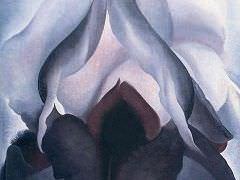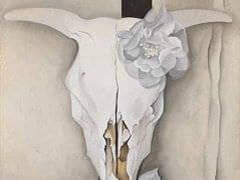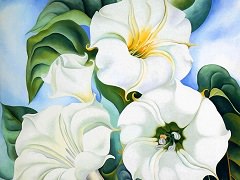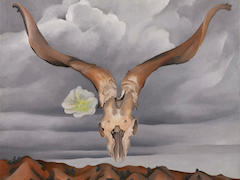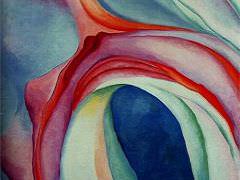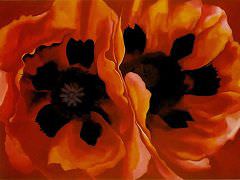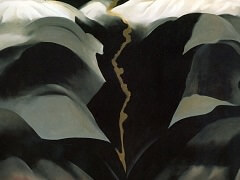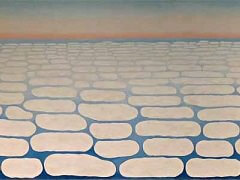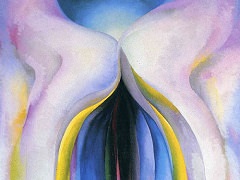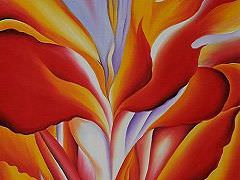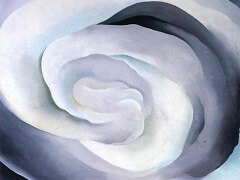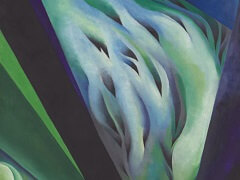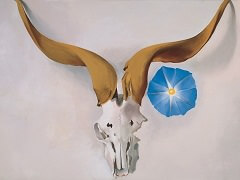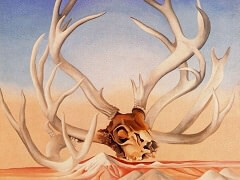Cow's Skull: Red, White, and Blue, 1931 by Georgia O'Keeffe
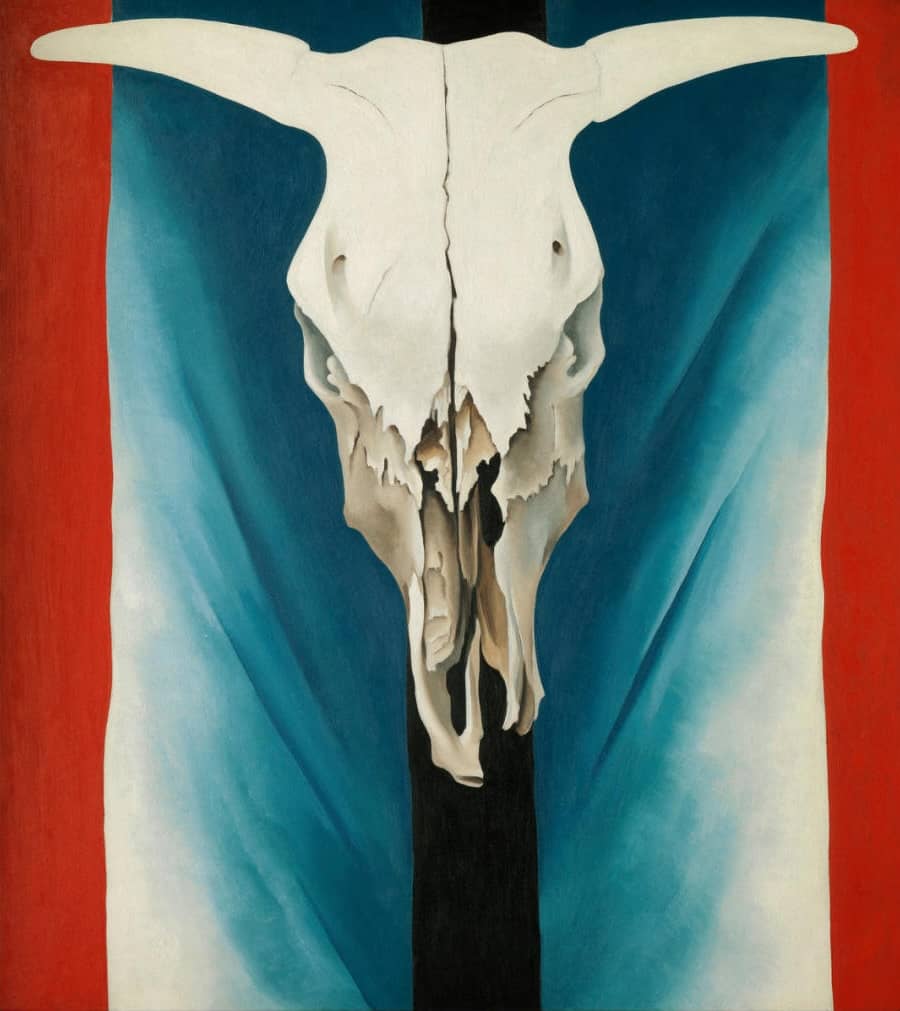
Cow's Skull: Red, White, and Blue was created by O'Keeffe in 1931. It is done in oil on canvas and measures 39 7/8 x 35 7/8 inches. (101.3 x 91.1 cm).
Around the time of the painting's creation, American artists, musicians, and writers were interested in identifying a uniquely American style and subject matter for their work. They sought out themes for the "Great American Novel" or
"Great American Story". O'Keeffe offered a different opinion about what images could best symbolize America.
Rather than paying tribute to the lush pastoral landscape of the New World as the Regionalist painters did, or reflecting on urban problems like the American Scene painters, she often focused on images that seem at first to be more
desolate: A cow's skull or a brown hill or a largely featureless adobe wall.
In this case, she used a weathered cow's skull to represent the enduring spirit of America or depicting Jesus Christ on the cross with touches on the strong ties to Christianity. The painting prominently displays the three colors
of the American flag behind the cow skull. Although she said made it as a joke on the concept of the "Great American Painting," the picture has become a quintessential icon of the American West.
The painting is part of the Alfred Stieglitz Collection (1952) of the Metropolitan Museum of Art.

